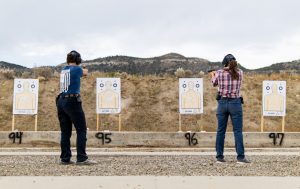Marc Cole
After Jefferson and Adams died on July 4, 1826, only a single signer of the Declaration of Independence survived. That man was Charles Carroll of Maryland. He would live for another six years, until 1832.
As a young man, Charles Carroll was the beneficiary of a first-class European education, receiving a degree in France from a prestigious Jesuit college and studying law in London. In later years, he often praised his Jesuit education and attributed his deep religious convictions, his literary style, his critical abilities and the sheer breadth of his knowledge to these formative years. Certainly his outstanding education helped make him an invaluable colonial citizen.
He returned from Europe to Maryland in 1765 and immediately plunged into the independence movement. In 1772, he wrote a series of anonymous articles defending the right of the colonies to pursue their own taxation policies. In 1774, he was sent (together with Samuel Chase and Benjamin Franklin) to Canada on a diplomatic mission to build international support for the colonial independence position.
Once Maryland cast its lot for independence (thanks to the heroic horseback ride by Samuel Chase), Carroll was elected to the Continental Congress. That was on July 4, 1776. So Carroll was not a member of the Continental Congress when the resolution for independence was passed. But he did sign the Declaration.
And he signed it with gusto. Like the other signers, Carroll knew that his signature would be a crime in the eyes of the Crown and that he would identify himself as a public target for the Crown. Many of the signers would later feel the wrath of the Crown as their homes would be destroyed, or in some cases, much worse.
Charles Carroll had plenty to lose. He was the richest man in America at that time: richer than John Hancock, Carter Braxton or Thomas Nelson, Jr. The pledge of the fortune of Charles Carroll to the cause meant something.
Some of the signers were already famous (Benjamin Franklin, John Adams, Sam Adams, Thomas Jefferson) and some had unusual names (Caesar Rodney, Button Gwinnett) which would clearly identify them to the King and his troops. For these rebellious individuals, there was little chance that the Crown would be confused as to their identities.
But the name “Charles Carroll” was apparently rather common. So, according to journalist John Hix, when Carroll signed his name as simply “Charles Carroll” and then returned to his seat, this caused another member of the Continental Congress to comment (perhaps under his breathe, but loud enough for all to hear?) that Carroll was not risking asmuch as the others, because there were too many men in Maryland with that name. The idea being that the King would be unlikely to ever arrest and try Carroll because he would never have sufficient proofthat he had the right man.
At that point, or so the story goes, Carroll rose, seized the pen once more and added “of Carrollton” to his signature.
With that, King George III would know not only who this particular rebel was, but just where to find him.
That additional act of defiance must have brought a smile to John Hancock’s face.
While we don’t know if that story is true, we do know that Charles Carroll did in fact add “of Carrollton” to his name and that for this tremendously wealthy signer – who with his signature pledged his life, fortune and sacred honor – there would be no hiding.
Fortunately, the King never found Charles Carroll of Carrollton and in 1778, Carroll was instrumental in drafting the Maryland constitution and in forming the first state government. He was elected to the Maryland Senate in 1781 and served there until 1800. During that time period, he was also elected to the United States Senate, and when Maryland passed a law prohibiting any man from serving in both the state and national legislatures simultaneously, Carroll chose to resign from the United States Senate and to remain in the Senate of his beloved Maryland.
After 1801, Carroll never held another political office, but he remained active for decades. From 1801 to 1806, he built Homewood House in northern Baltimore, as a wedding gift to his son. It cost the spectacular sum of $40,000 (that is, 1800 dollars!) and in 1876, it was donated to Johns Hopkins University, eventually becoming the main campus. In 1828 (when he was 92), Carroll was instrumental in the establishment of the Baltimore & Ohio Railroad Company.
Charles Carroll died at the age of 96, the last of the signers of the Declaration to die. Andrew Jackson was President.
Check out Mark’s book: Lives, Fortunes, Sacred Honor: The Men Who Signed the Declaration of Independence













